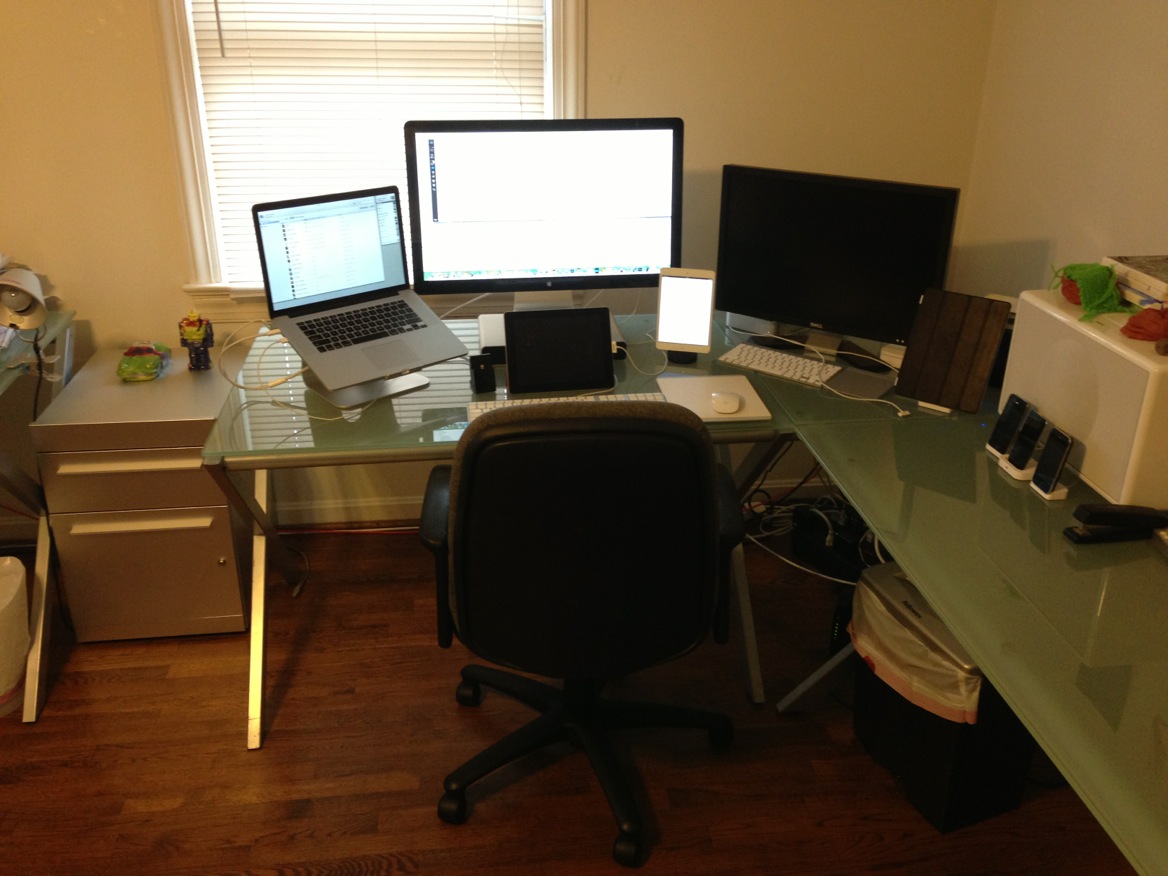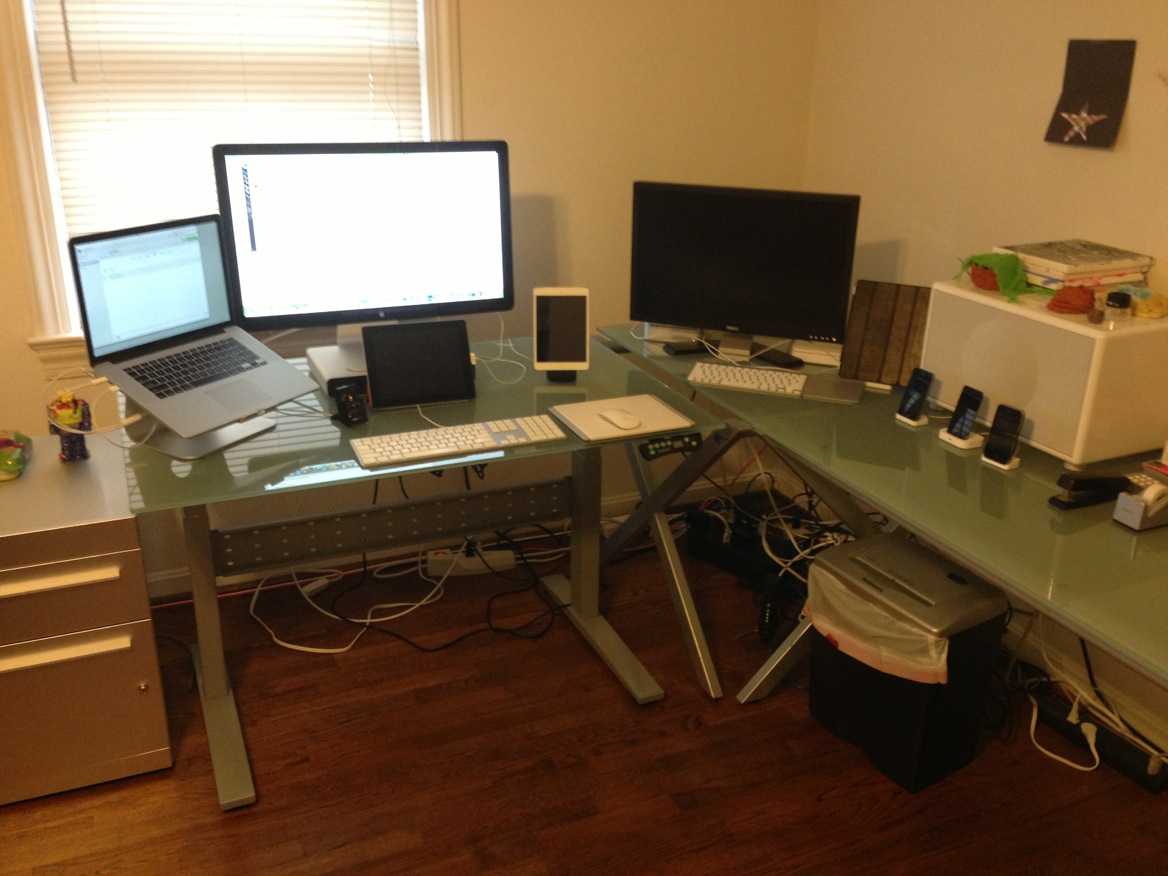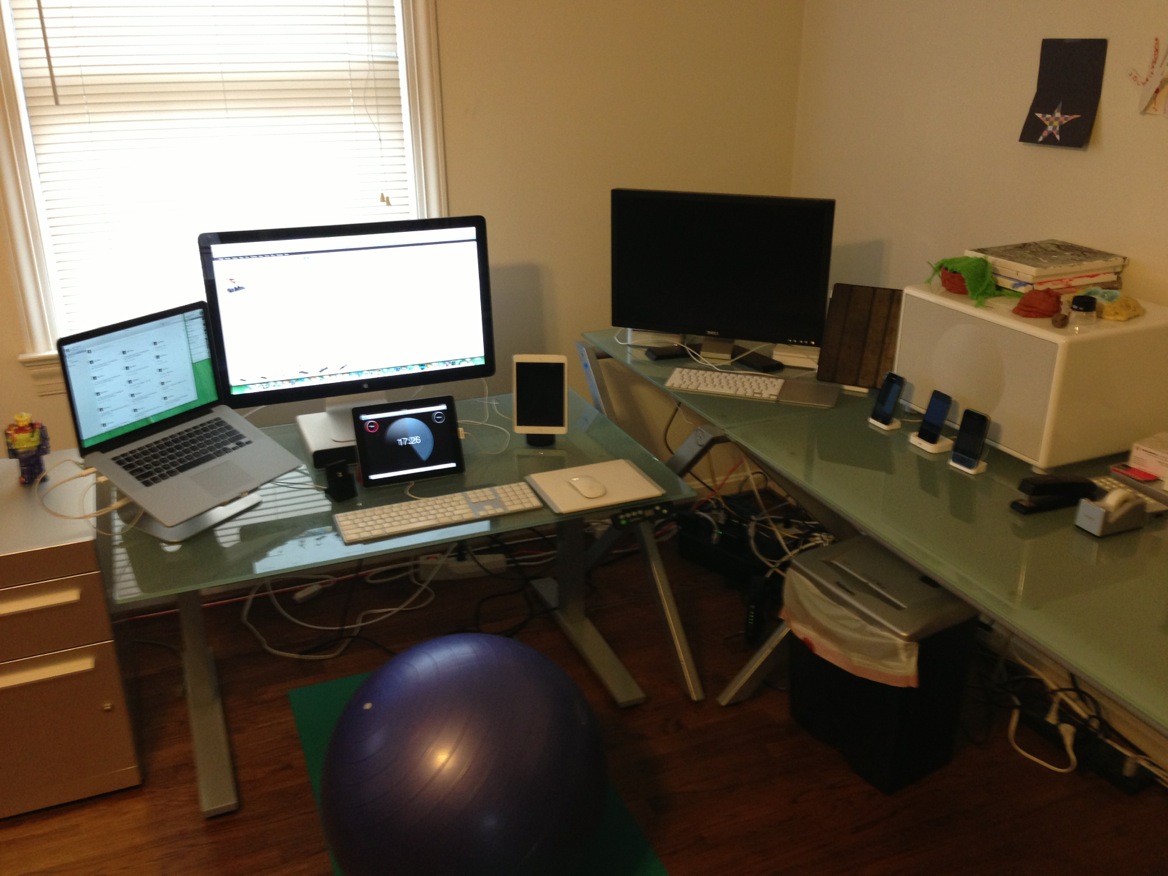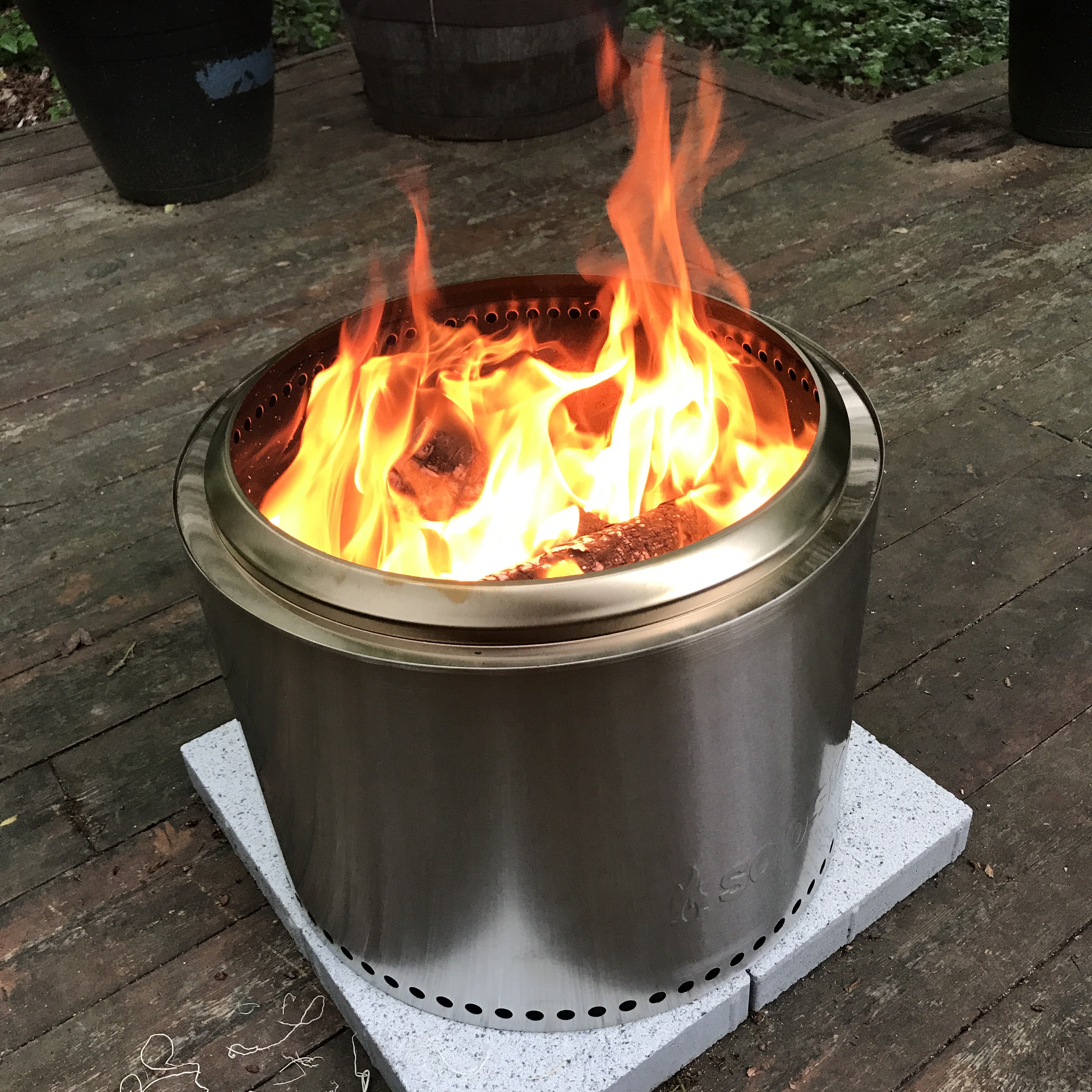
Last weekend I impulse purchased a Solo Stove Bonfire fire pit because it looked awesome and was highly reviewed, we’ve wanted a fire pit or outdoor heater, there was a 10% discount for Earth Day weekend, and the mobile website accepted Apple Pay which made checkout super easy.
It arrived today and I was super eager to test it out. I had already purchased some 2″ paver stones to set it on (to protect our wood deck), firewood, and marshmallows.
What follows is my first impression mini-review after using it for the first time:
- It lights quickly and easily. I used some straw, a few pieces, of kindling, and then straight to logs. There was no need for lighter fluid or fire starters or extra feeding of paper. I made a small bed of straw, put 6 pieces of kindling and 1 log on top and then lit it. Once the fire was going each additional log ignited quickly.
- Once it heats up, it does produce less smoke than a normal campfire / fire pit. It takes a good 10-15 minutes to reach this point though.
- The fire pit needs to be both pre-heated and full of logs in order to get the secondary combustion where pre-heated air flows into through holes around the upper rim to form flame jets that burn the smoke emitted from the main fire.
- It seems to burn through wood pretty quickly.
- Once the flames die down, it forms a great bed of embers for roasting marshmallows.
- It burns the wood almost down to nothing. I had a few golf ball sized chunks of charcoal but mostly fine ash left over.
- The fire pit cools down quickly. I was surprised how quickly it cools down. Because it burns so efficiently, I think it burns everything it can down to ash and then when there’s nothing left it quickly cools. I imagine the same airflow that allows it to burn so efficiently also contributes to the rapid cooling afterwards.
- 👍
Secondary combustion: Look for the jets of flame periodically forming around the rim
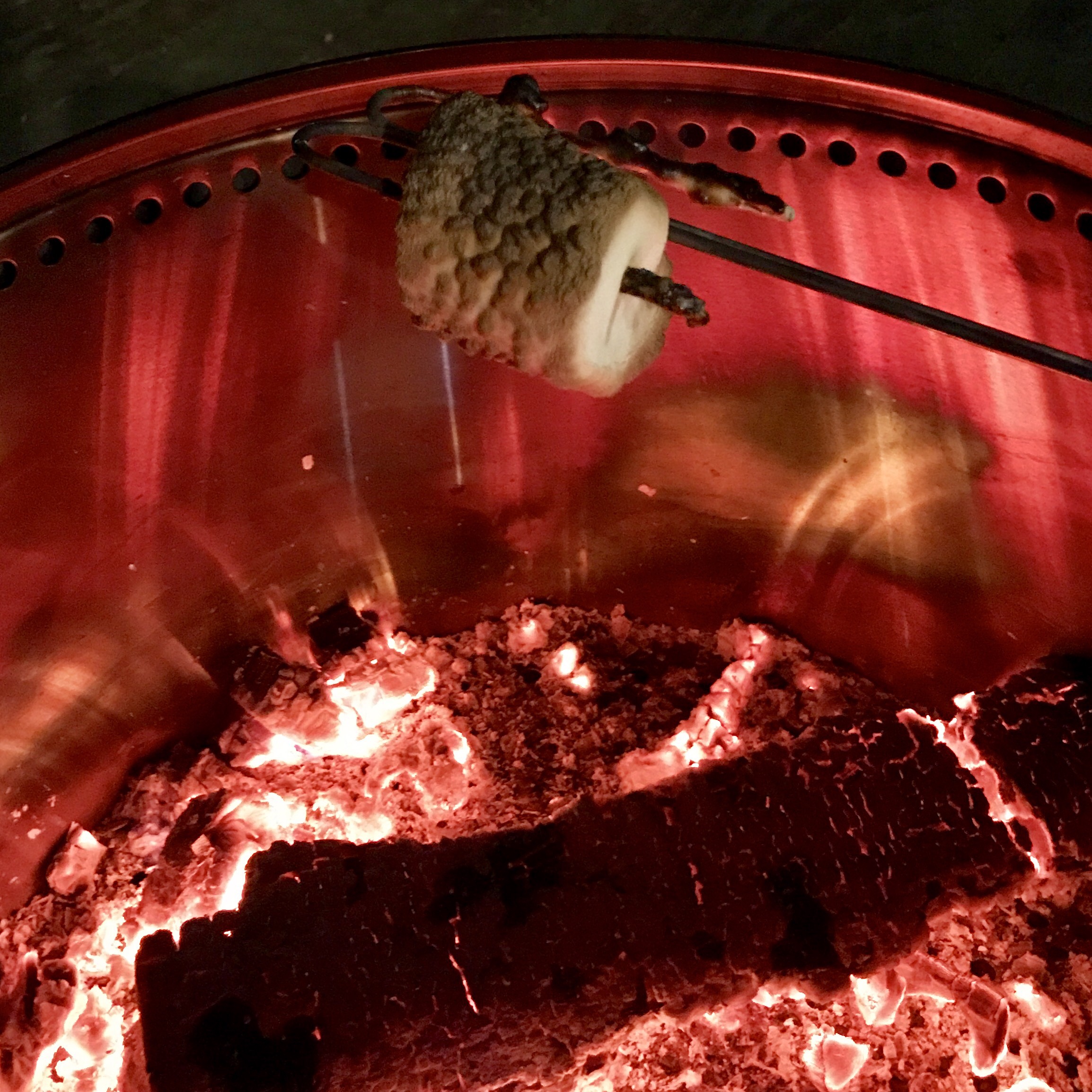
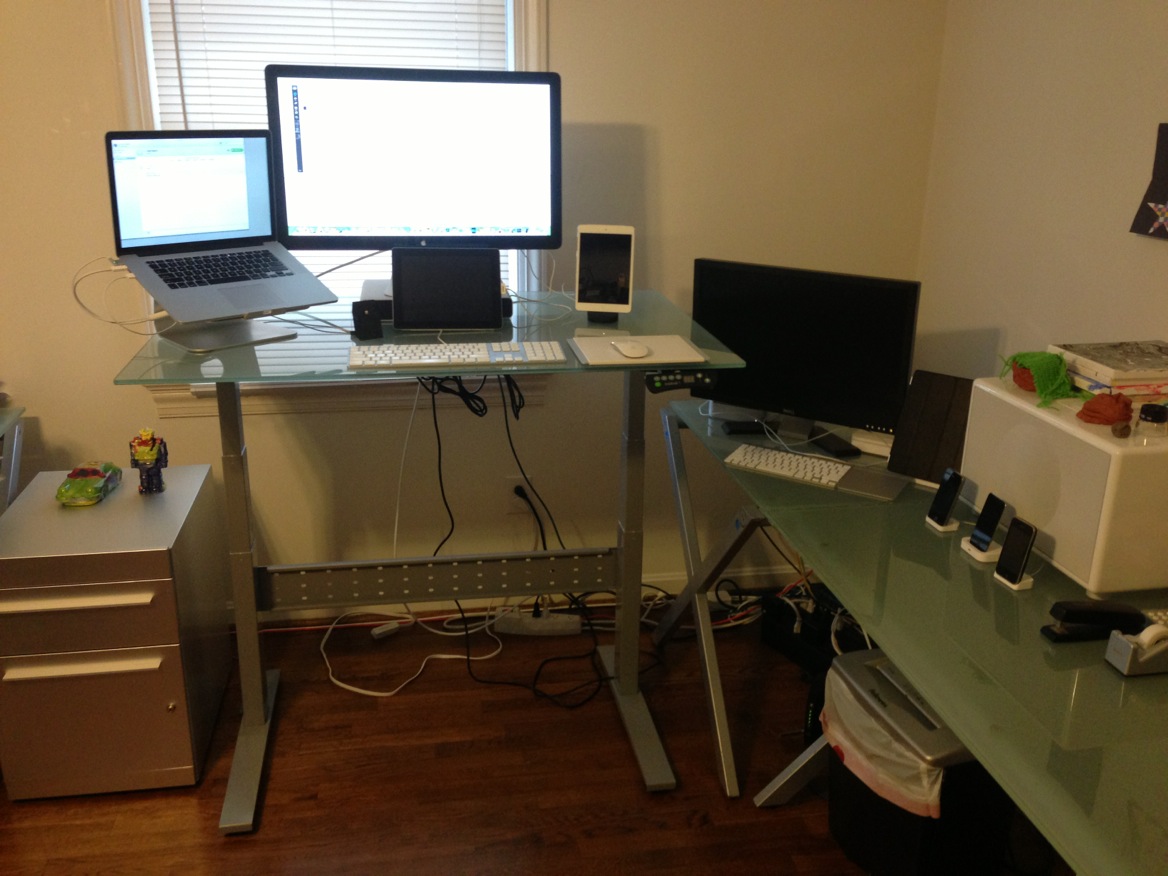 Early this year I purchased my first standing desk. Originally I was looking at treadmill desks as a way to help get in shape despite the long hours I spend at my desk each day. I didn’t feel like I had the time for a DIY project, so I was considering pre-built solutions such as this
Early this year I purchased my first standing desk. Originally I was looking at treadmill desks as a way to help get in shape despite the long hours I spend at my desk each day. I didn’t feel like I had the time for a DIY project, so I was considering pre-built solutions such as this 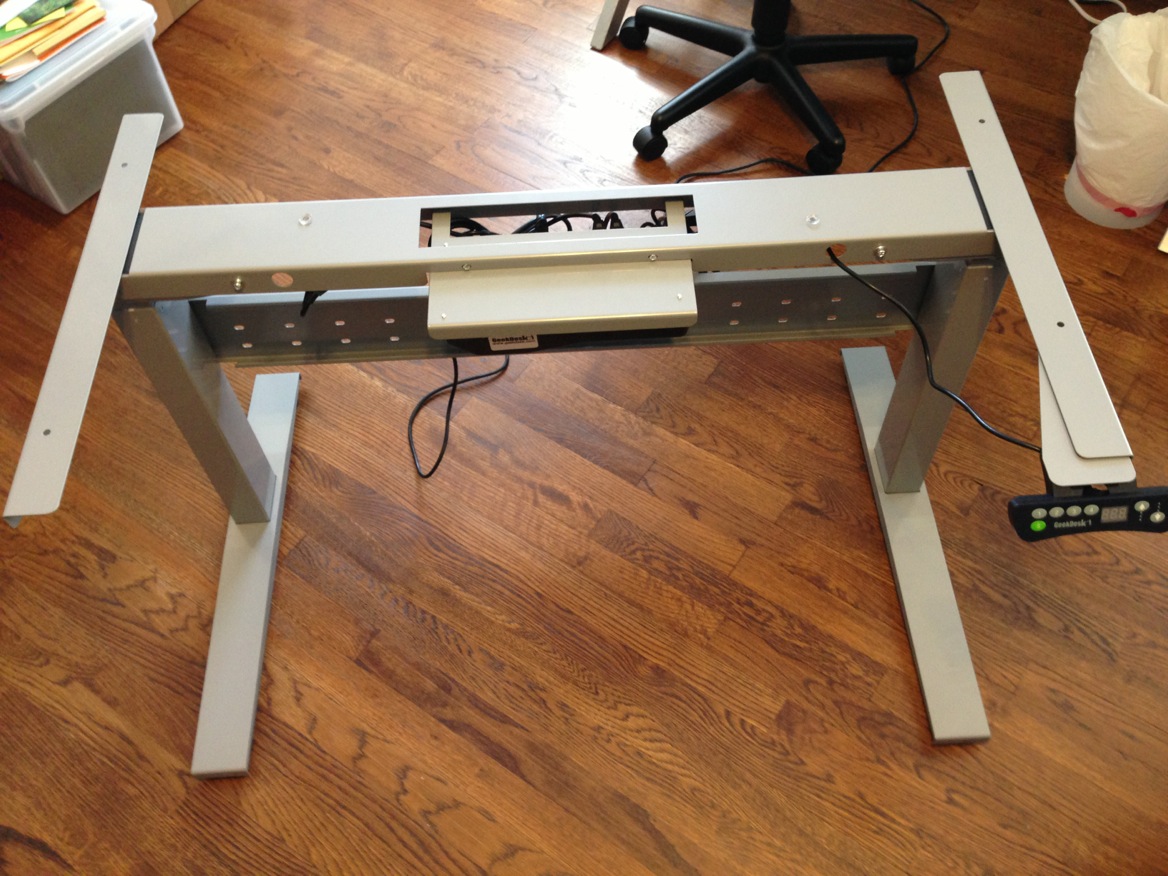 Customer service at GeekDesk was great and my desk arrived promptly. You assemble it yourself, but that’s easy and the build quality is great. Adding your own glass top is probably even easier than adding your own wood top because you can assemble the desk upright and merely set the glass top in place. The one thing you need are little rubber / silicone pads to put in between the metal frame and the glass top. These cushion the top but also provide the necessary friction so that the top will not slide sideways with pressure. Fortunately I already had these from my previous desk frame.
Customer service at GeekDesk was great and my desk arrived promptly. You assemble it yourself, but that’s easy and the build quality is great. Adding your own glass top is probably even easier than adding your own wood top because you can assemble the desk upright and merely set the glass top in place. The one thing you need are little rubber / silicone pads to put in between the metal frame and the glass top. These cushion the top but also provide the necessary friction so that the top will not slide sideways with pressure. Fortunately I already had these from my previous desk frame.